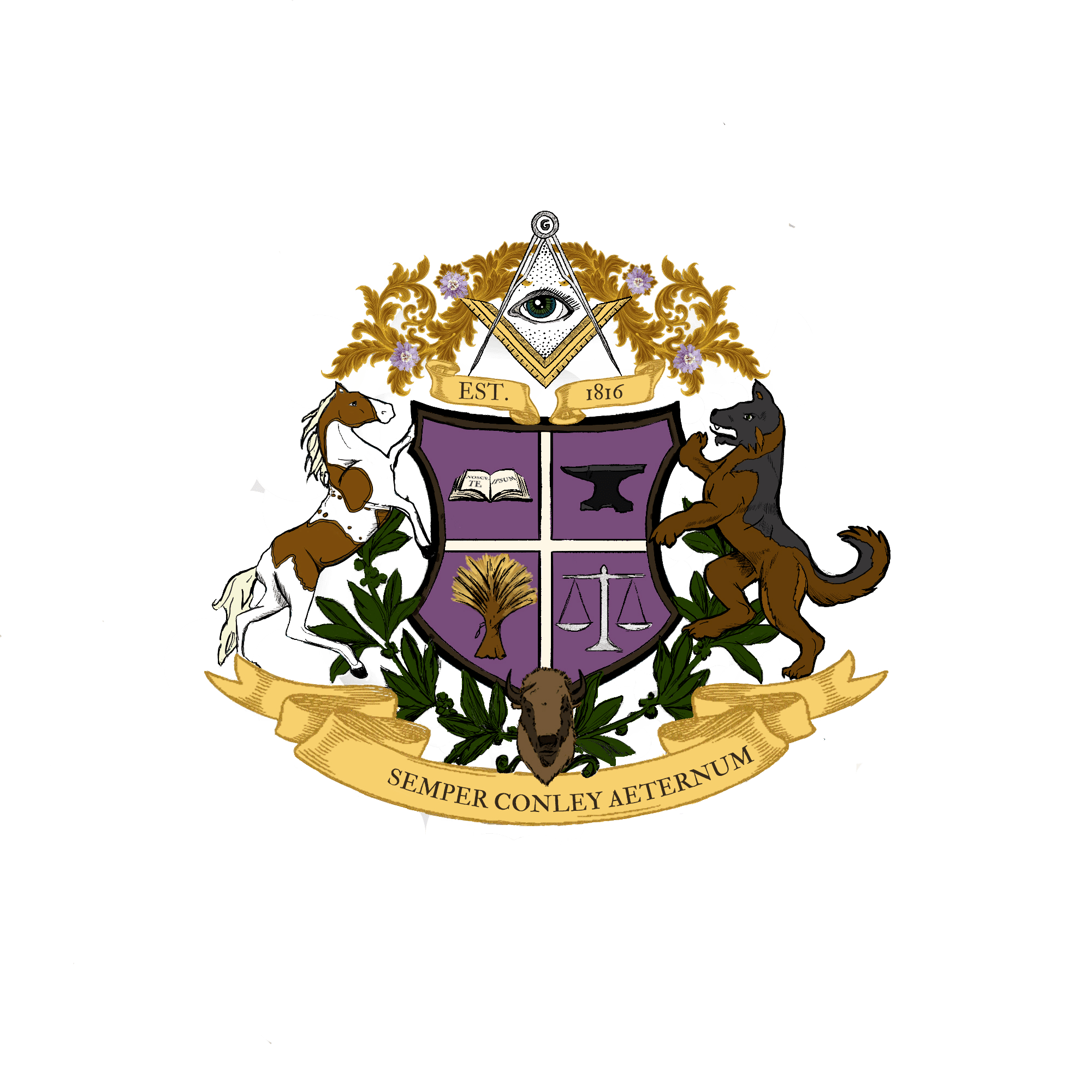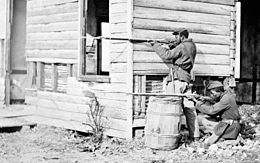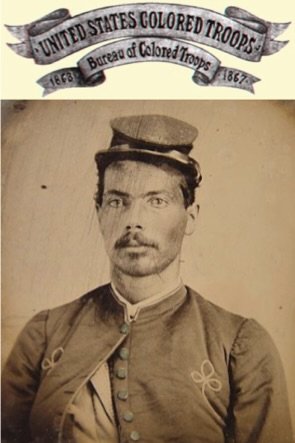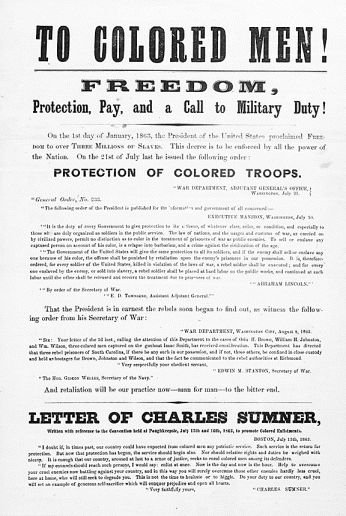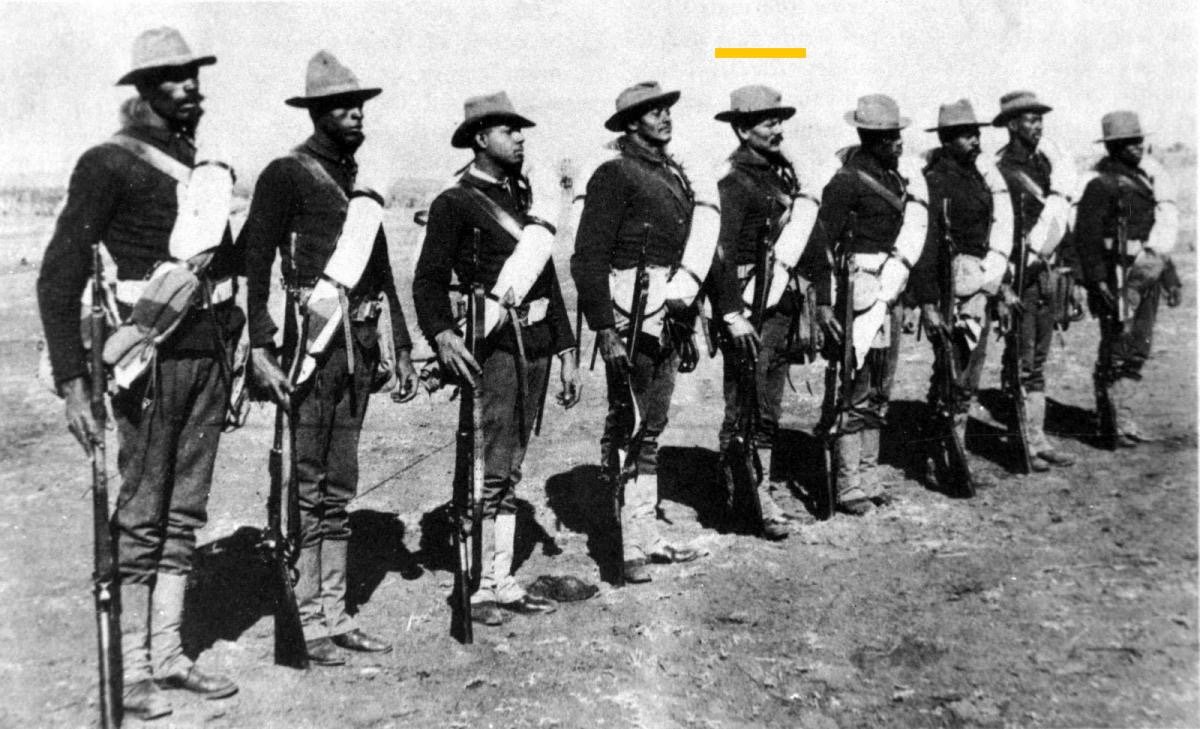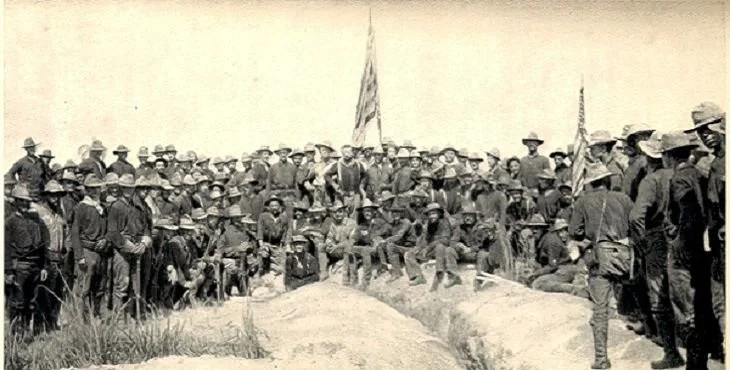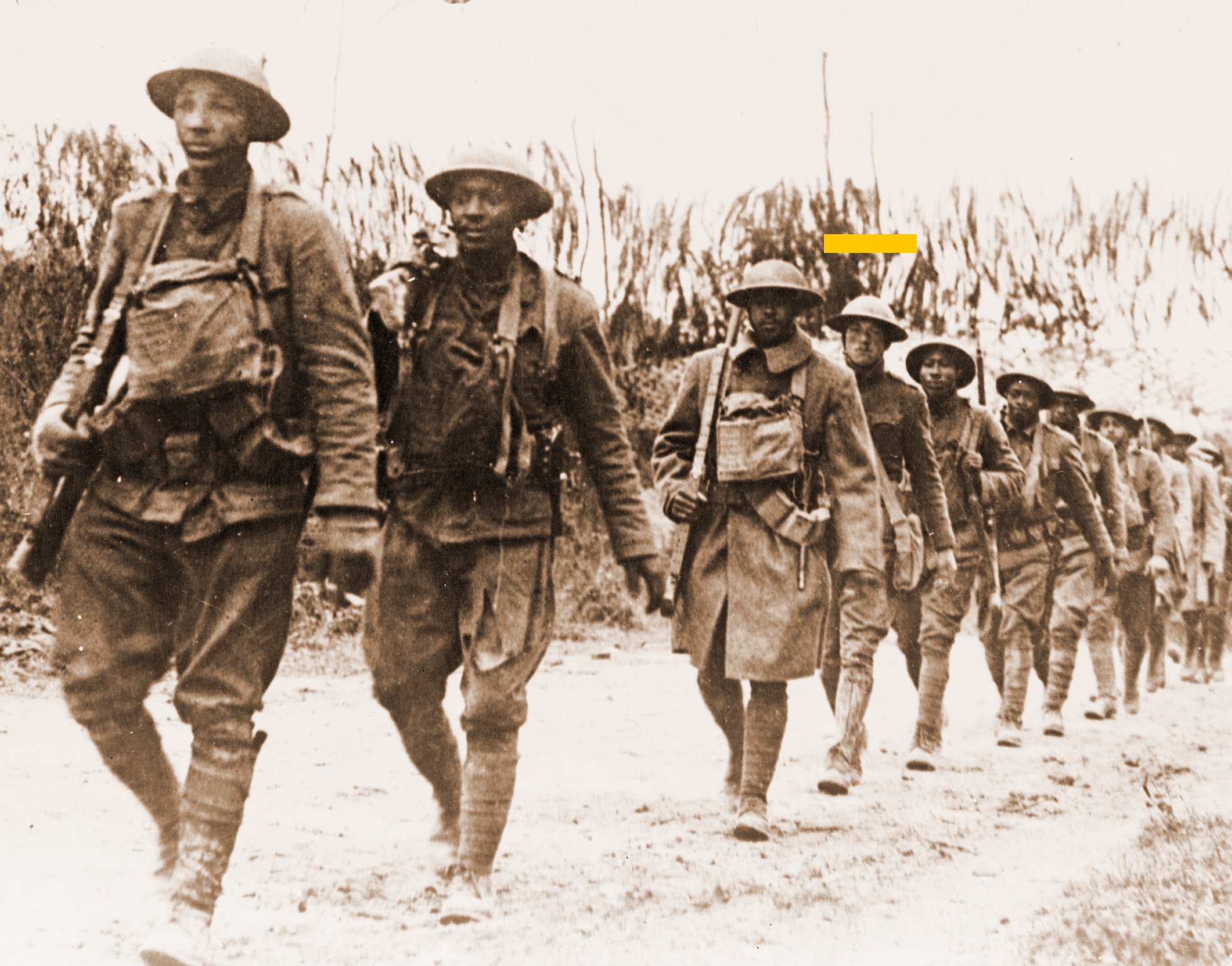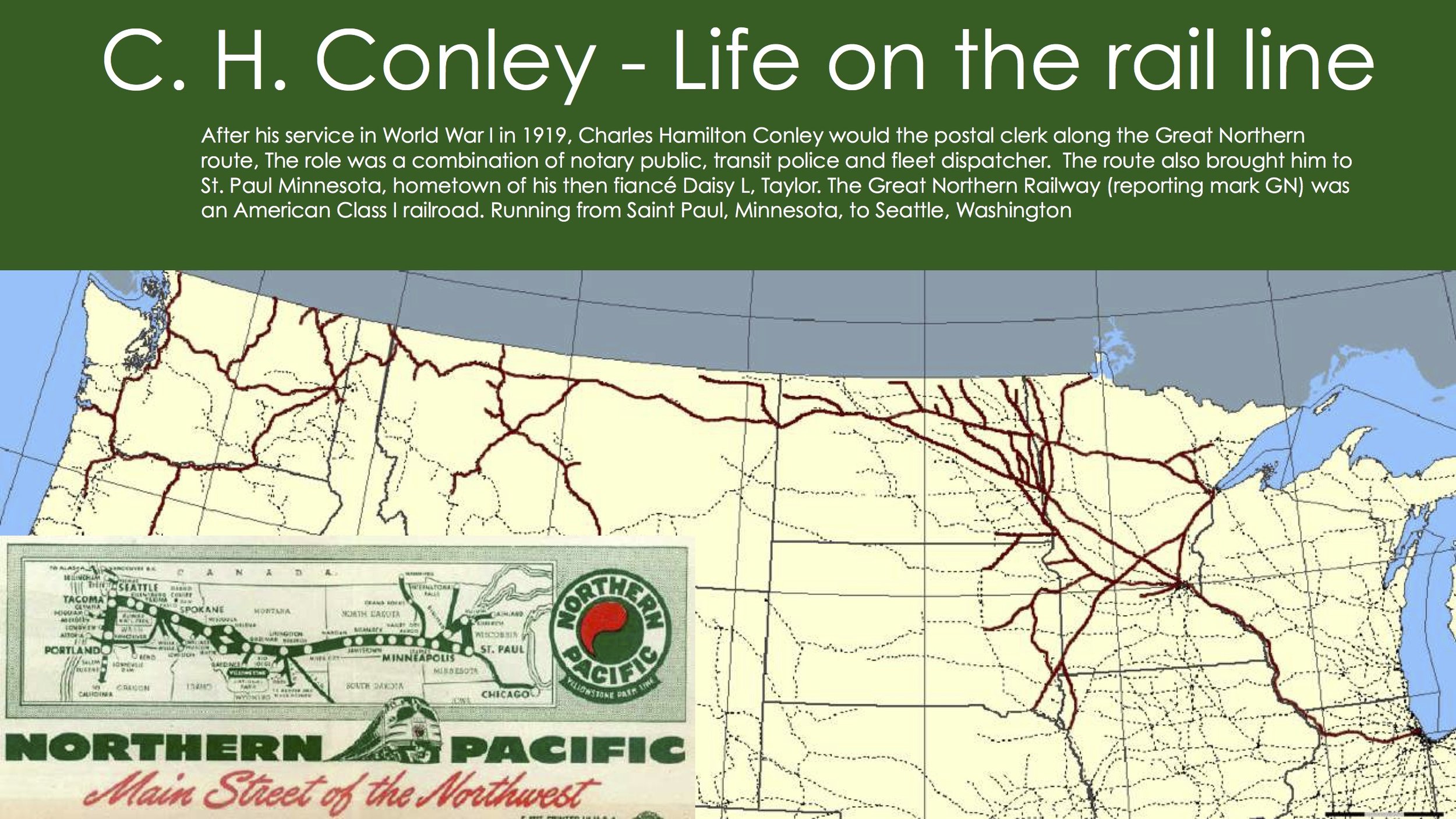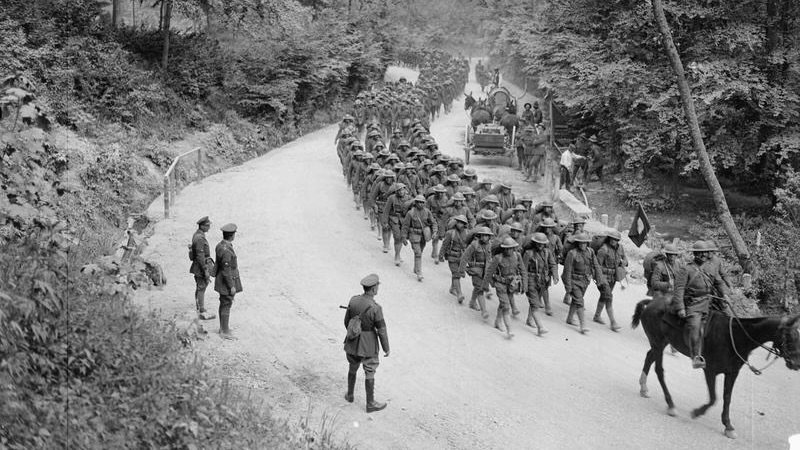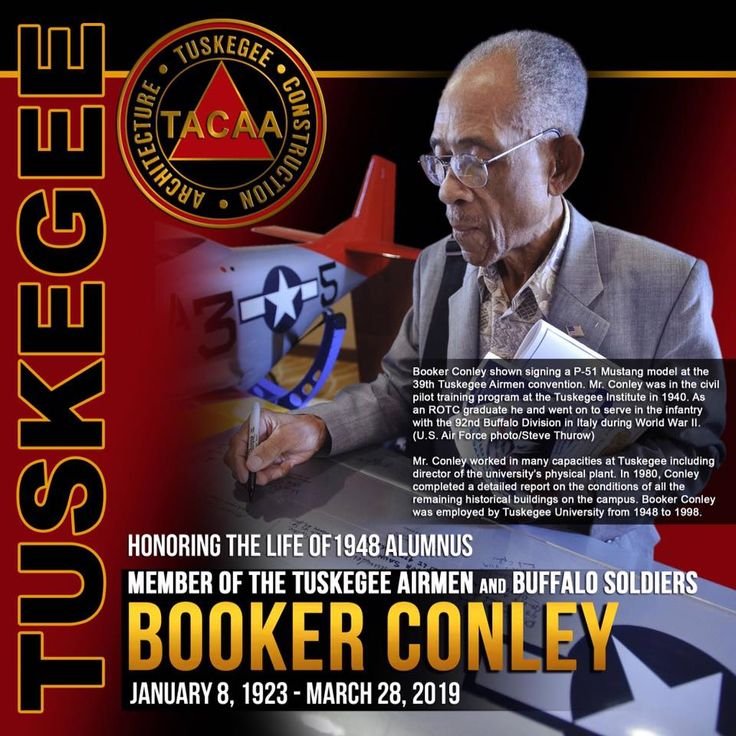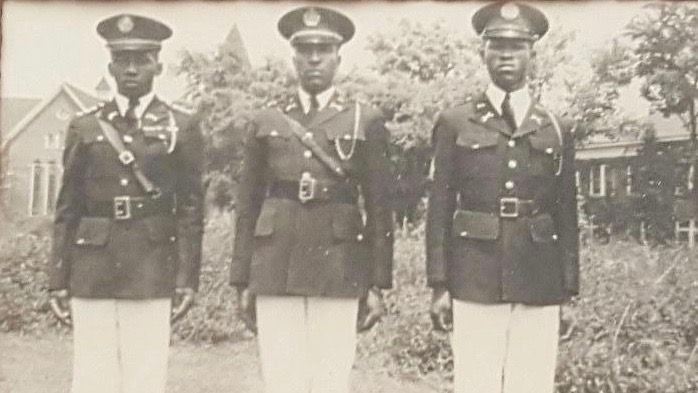THE CONLEY MILITARY LEGACY
A Conley has served in active duty every single year since 1863.
Family members have consistently been placed in positions of trust and fiduciary duty. Conleys have often been prescribed as ‘Poet-Warriors’, meaning they balanced the necessity of combat with an intellectual approach to their duties and a philosophical take on the nature of military culture. Matthew Conley was the family’s first military icon, fighting in the Civil War for the Union Army in several war theaters in Alabama, Tennessee, and Georgia for the U.S.C.T. ( U.S. Colored Troops ) from 1863 until 1867. Then several Conleys served under the command of General John J. Pershing, 6-star General, and Commander of the Armies of the United States, who maintained a personal formal affiliation with the family during his career from 1882 until 1925. World War 2 would renew the family’s reputation for valor, with nearly a dozen family members serving the United States, sometimes side by side. The Korea War and and Vietnam conflicts introduced new generations, as did the ongoing conflicts in the Middle East.
SGT. MATTHEW CONLEY
Enlistment: 1863
Branch: Army United States Colored Troops
Division: 14th Regiment, Company D
Highest Rank: Staff Sgt.
Theater: Civil War battles in Alabama, Tennessee and Georgia.
In July of 1862, Congress passed President Lincoln’s Militia Act of 1862. This law enabled people of color to enlist, but serious concerns persisted. In May 1863, the War Department established the Bureau of Colored Troops, which facilitated Black enlistment throughout the country and allowed Matthew Conley to join the 14th U.S. Colored Infantry, organized in Gallatin, Tennessee in 1863, as shown below.
Photo Credit: Tennessee State Library & Archives, created by E. M. Stark. Troop Barracks, Gallatin, Tennessee, 1863, where Matthew Conley was stationed. This image depicts troop formations around a courthouse with cupola. Vignettes in the scene include a group of soldiers standing around and a couple of soldiers on horseback in the foreground.
Matthew’s decision to enlist in the Union Army and fight against the Confederates was extraordinarily dangerous. USCT soldiers suffered extra violence at the hands of Confederate soldiers. They were always at risk for murder by Confederate soldiers, rather than being held as prisoners of war.
Matthew Conley participated in the Battle of Nashville in December 15–16, 1864, depicted here in Chromolithograph by Kurz & Allison, published 1888.
The Supervisory Committee for Recruiting Colored Regiments in Philadelphia opened a Free Military Academy for Applicants for the Command of Colored Troops at the end of 1863. This may be why Matthew found his way to Pennsylvania after the war ended. His descendants mixed into the native population in Pennsylvania and Ohio, according to hospital records from central and western Pennsylvania.
Matthew Conley, U.S.C.T., 14th Regiment, Company ‘D’ . Enlistment day 1863.
Conley served gallantly in the 1st detachment under Colonel Thomas J. Morgan (consisting of the 14th, 16th, 17th, 18th and 44th USCT) in his first three years of service for the Union Army. The regiment participated in Dalton, Ga.; Decatur, Ala.; Battle of Nashville; and Chattanooga. The 14th mustered out at Greenville in March 1866.
Advertisement like those posted in Huntsville when Mattew Conley enlisted with the first U.S.C.T.
Shown here is a list of Matthew Conley’s deployments. After the Confederacy fell, the Union Army placed Alabama and Tennessee under Federal control, and he remained on occupational duty.
Once the appetite for occupation waned in Washington DC, the Federal government withdrew the troops and a violent backlash to Reconstruction began. Hundreds of Colored Men who had fought with the Union Army were targeted for mob violence. It is believed that this is when Conley moved to Pennsylvania permanently.
Upon retirement from military service, Paschal Conley Jr. became a significant landowner in Montana. He enjoyed a high profile in Montana, Idaho, and Washington state due to his sterling reputation.
SECOND LIEUTENANT
PASCHAL CONLEY JR.
Enlistment: 1878
Branch: Army
Division: 24th & 10th Infantry, Horse Calvary
Highest Rank: 2nd Lieutenant
Theater: Spanish-American War, Cuba. Deployments across the American West in the expansion of the United States.
Paschal Jr. was the son of livery owner Paschal Conley Sr., nephew of carriage maker James Conley, wheelwright John Conley, and prosperous blacksmith William ‘Bill’ Conley. He was the brother of Army Nurse Corp pioneer Sallie Ann Conley Thornton. He was the cousin to Matthew Conley of the U.S.C.T. of 1863-1867.
As a military figure, Paschal Conley Jr. was exceptional. However, he was historically significant not for valor on the battlefields or high seas, but rather, his administrative abilities, discipline, and attitude toward learning. His contributions helped enhance the public image of the Buffalo Soldiers greatly.
His processes and zeal for order learned as protégé of General John J. Pershing had a transformative effect on the Buffalo Soldiers. After his training as adjutant for Pershing, Conley’s Buffalo Soldiers horse-mounted calvary evolved from a militia into a flexible, disciplined utility force capable of everything from construction of garrisons to management of ammunition supply chains to combat action.
He introduced basic exercise and calisthenics, organized sports and recreation. Conley created mini-libraries filled with edifying reading at forts on the Western Territories in the 1800s. All of these efforts reshaped the Buffalo Soldiers into an admired institution from 1880 until his retirement in November of 1906.
In retirement, Conley became a significant figure in Montana, and his wife a doyenne of the Black Elite in Montana, Idaho, and Washington State in decade from 1904-1914. His daughter Mattie was well-sought after for marriage, and it was arranged for her to wed a young Buffalo Solider trained by Paschal’s own protégé, Everett Davis. They were stationed in Spokane, Washington. Their descendants would reach the highest level of achievement in the equestrian sports.
Paschal Conley Jr. , fifth from left, gold bar marker above head, in New Mexico or Oklahoma. Location unverified. Early in his career, he was stationed in the Southwest.
Teddy Roosevelt with Paschal Conley Jr. in Cuba. The Rough Riders on his left and right, Buffalo Soldiers on the far right of this photo. The Regulars (volunteer infantry on the far left). This photo was rarely shown in its entirety for 100 years, and has been often cropped to exclude the Regulars and Buffalo Soldiers.
Paschal Conley managed this horse transport for Spanish-American War, courtesy of U.S. Army Heritage Education Center.
Sgt. Quartermaster Paschal Conley in Cuba with the Buffalo Soldiers Calvary.
SECOND LIEUTenant
CHARLES H. CONLEY
Enlistment: 1910 U.S. Marshal; 1917 U.S. Army
Branch: Army
Division: 307th Infantry, Company ‘K’
Highest Rank: 2nd Lieutenant
Theater: World War 1, France.
Charles Hamilton Conley was born in 1890 on Fort Bayard military base in current day New Mexico. He was the son of then Sgt. Quartermaster Paschal Conley Jr. and his wife Mary Jones Conley. He was the grandson of Huntsville livery owner Paschal Conley Sr. and his wife Mary Steiger Conley, and nephew of Army Nurse Corp pioneer Sallie Conley Thornton.
Initially, he joined the Federal Marshal’s Service in 1910, and was assigned to guard the mail and treasury on the Northern Pacific Railway, a Class 1 rail built by Railroad baron Henry Villard connecting Minnesota to Oregon. In the Wild West, the railway marshal positions like the one Charles held were a combination of U.S. Customs official, Postal Clerk, Notary Public and Law Enforcement, all combined. In the Rocky Mountain and Northwest regions, they functioned as all-purpose administrators where there was no government infrastructure. Charles served warrants and subpoenas, as well as paying and collecting fees.
When America entered World War 1, in April 1917, Charles’ father’s mentor John J. Pershing was named General and Commander of the American Expeditionary Forces (AEF) in May, leading the U.S. in The Great War. Charles enlisted immediately, began training in June 1917, and sailed to France with Pershing as the second-generation Conley to serve General Pershing as Quartermaster.
The deployment of Conley and other Colored Troops was covered extensively by newspaper articles in the Mountain States. It was in this era that Conley became a prominent figure in Great Falls, eclipsing his father’s profile in Havre.
Charles Hamilton Coney on the ship manifest for World War 1. 2nd Lt. 370th Infantry, Company ‘K’ at the port in Brest, France.
Ready & Forward. Charles Hamilton Conley and the Colored Contingent reporting to the front in World War 1. Charles was the son of Paschal Conley Jr. and the 2nd generation of the Conley Family to serve under the command of General John J. Pershing, 6-star-general and Commander of the Armies.
Charles Hamilton Conley (standing on left); with brother Edward Conley (sitting on left) at an event after World War 1.
Map depicting Charles Conley’s meritorious service protecting the Northern Pacific line along the wild frontier. He was an early version of a federal marshall, notary, postal official, and guard. He travel back and forth from Oregon to Minnesota, where he met his wife Daisy L. Taylor, from a prominent family in the St. Paul, Minnesota area.
Charles Conley’s 307th Infantry Regiment, headed by a British regimental band, marching past Major-General Arthur Solly-Flood (GOC 42nd Division) on a road near Famechon, 7 June 1918.
SECOND LIEUTENANT
VERNON J. BAKER
Enlistment: 1941 U.S. Army
Branch: Army
Division: 307th Infantry, Weapons Platoon, C Company, 1st Battalion
Highest Rank: 2nd Lieutenant
Theater: World War II
Vernon J. Baker is a recipient of the Congressional Medal of Honor, and thus is the most decorated Conley family member in the 160-year military legacy.
Baker was orphaned at only four (4) years due to his parents’ untimely death caused by what was believed to be Tuberculosis (TB), and he was raised by his grandparents in Cheyenne, Wyoming.
A pugnacious youth, he enlisted 1941, as World War II unfolded. He was assigned to the Quartermaster Corps of the 25th Infantry at Geiger Field in Spokane, Washington. He hungered for combat experience.
Baker received his commission as a 2nd Lieutenant on January 11, 1943, and married Helen Conley Stewart, who was granddaughter of Paschal ‘Pony’ Conley and the niece of Congressman Bennett Stewart. Vernon and Helen had two children: Vernon and Michael. In 1944, he landed at Naples, Italy, and quickly rose to command of Weapons Platoon, C Company, 1st Battalion, 370th Infantry.
He led his troops through enemy mine fields and heavy fire to secure an occupied mountain objective. Of the 25 men in his platoon in Italy, 19 were killed, as Baker personally eliminated an observation post, which included three (3) enemy machine gun nests under heavy assault.
His Captain recommended Baker for the Distinguished Service Cross, which he received on July 4, 1945, in a ceremony in Viareggio, Italy. He was denied Honors due to the ethnic bias common in that era. Baker continued to serve in the Army dutifully until he retired in 1968. A local hero, he worked for the Red Cross for more than 20 years, and retired in rural Idaho
Vernon Baker receiving the Congressional Medial of Honor for valor demonstrated in Italy during WWII.
Click here, to learn more about the valor of Vernon Baker. The only living Black veteran to be given the Medal of Honor. All others had passed away by the time this historical wrong was corrected.
PBS Special on Vernon Baker. A portrait of valor.
Enlistment photo.
Vernon Baker (middle) with his Cousin Booker Conley (right side) at 370th Regimental HQ, Chiavari, Italy.
Denied the chance to become a Quartermaster like Conleys before him, Baker was thrust into the front of battle in World War 2.
SGT.PILOT SQUADRON
COLEMAN CONLEY
Enlistment: 1940
Branch: U.S. Air Force then named Army Air Force
Division: 385th AAF (U.S. Air Force then named Army Air Force)
Highest Rank: Staff Sergeant / Fighter Pilot
Theater: World War II
SGT.PILOT SQUADRON
BOOKER CONLEY
Enlistment: 1940
Branch: Army (U.S. Air Force then named Army Air Force)
Division: 92nd Buffalo Division
Highest Rank: Staff Sergeant / Fighter Pilot
Theater: World War II Italy
Booker Conley greatly admired his older brother, Coleman, and would follow him to Tuskegee University, where Coleman had enrolled in the very first class of Tuskegee Airmen.
Conley Cousins: Monroe Conley, Dexter Conley, and Booker Conley, shortly after the death of Coleman Conley, Booker's brother in combat flight exercises.
In his early days at Tuskegee’s air program, Booker Conley extended his family’s century-long tradition in carpentry by studying architecture at Tuskegee University. The architecture school created by Robert Robinson Taylor. Booker drafted the architectural plans to build the airplane hangars that housed Tuskegee’s famous “Red Tail” fighter planes. His hangars are now registered as National Historical Monuments.
THE BROTHERS PRUITT
Conley Military Figures, past and present (from left to right): Charles Hamilton Conley; Willie Conley'; Willie Walter Pruitt; Cleatus Rodgers Sr.; Willie Stewart; Atia Fletcher.
